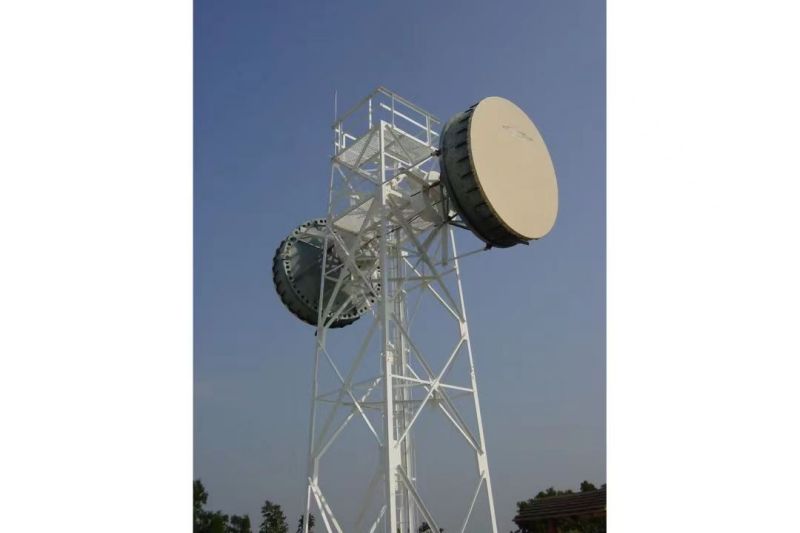The microwave tower, also known as microwave iron tower or microwave communication tower, is commonly constructed on the ground, rooftops, or mountain tops. The microwave tower boasts strong wind resistance, with tower structures using angle steel supplemented by steel plate materials, or can be entirely composed of steel pipe materials. The various components of the tower are connected by bolts, and after processing, the entire tower structure undergoes hot-dip galvanizing for corrosion protection. The angle steel tower consists of tower boots, tower body, lightning arrester tower, lightning rod, platform, ladder, antenna support, feeder rack, and lightning diversion lines.
Product Purpose: The microwave tower belongs to a type of signal transmission tower, also known as a signal transmission tower or signal tower, primarily providing support for signal transmission antennas.

Product Features: In modern communication and broadcast television signal transmission tower construction, regardless of whether the user selects ground or rooftop towers, they all support the installation of communication antennas to increase the signal service radius for communication or television transmission, achieving the ideal professional communication effect. Moreover, rooftops also function as lightning protection and grounding for buildings, aviation warnings, and decorate office buildings.
Product Function: The microwave tower is mainly used for the transmission and emission of microwave, ultrashort wave, and wireless network signals. In order to ensure the normal operation of wireless communication systems, communication antennas are usually placed at the highest point to increase the service radius and achieve the desired communication effect. Communication towers play a crucial role in communication network systems by providing the necessary height for communication antennas.
Post time: Dec-27-2023





